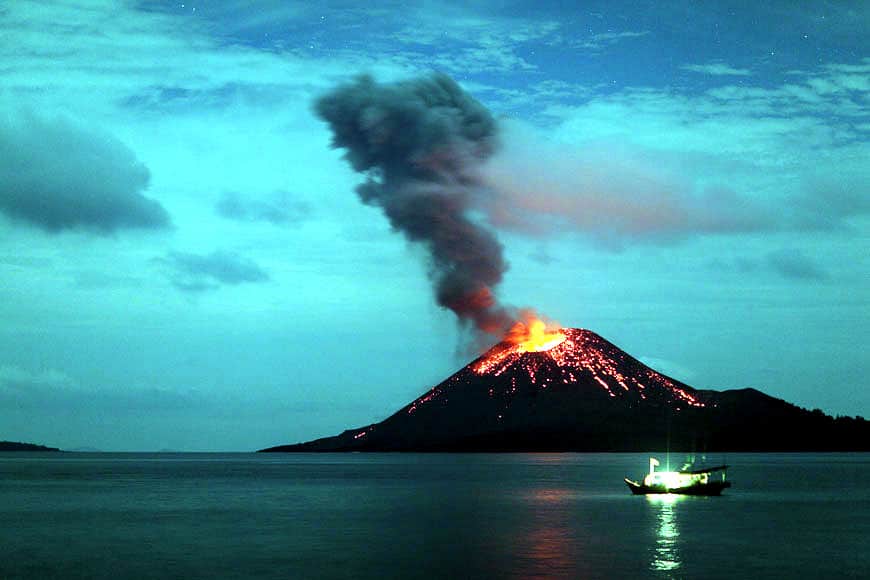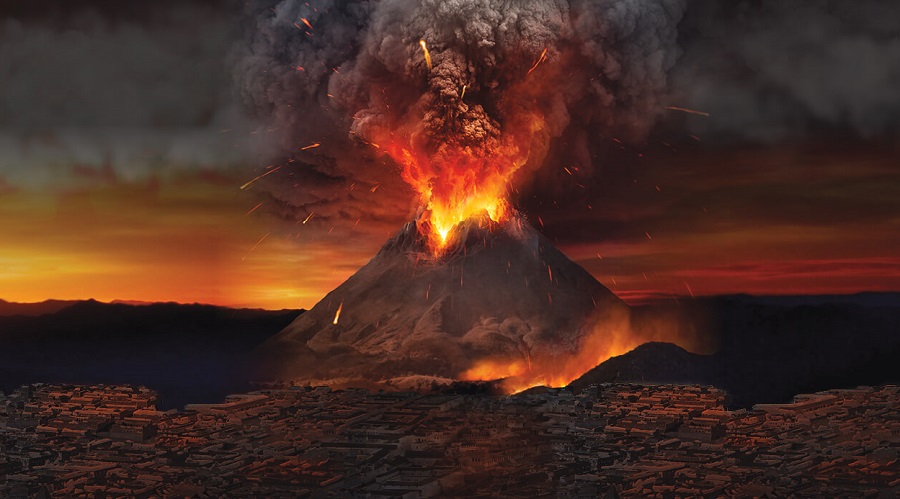Pompeii was an ancient town that was destroyed by one of the most devastating volcanoes ever. It used to exist very close to where the modern Naples is, in the Campania region in Italy. It was buried along with several other villas like Herculaneum in AD 79 in a volcanic eruption of Mount Vesuvius which also claimed most of their inhabitants. Pliny the Younger was the one surviving eyewitness and he reported that the Mount spewed a cloud of ashes, stones and volcanic gases to a 33km height.
Vesuvius erupted several times and is the only European mainland volcano that has erupted within the last hundred years. Pompeii which has the UNESCO World Heritage Site status has been a tourist site for over 250 years and is today one of Italy’s most popular tourist attractions, getting about 2.5 million visitors yearly.
Dating back to 1600, over 278,880 people have lost their lives as a result of volcanic activity. Apart from the lava, there are many other things that come to cause death such as starvation and other secondary hazards.
Devastating Volcanoes

1. KRAKATOA, ITALY
In 1886, this Tsunami killed 36,000 people by releasing an energy which could surpass that from 13,000 Hiroshima atomic bombs. The island was completely destroyed and another one named Anak Krakatau (meaning child of Krakatao) crept up in its place within 50 years.
By the year 2007, new activity began to be noticed and more recently also in 2017. This island is located between Java and Sumatra, two of Indonesia’s most populated islands and as such poses a huge threat to their residents.
2. MOUNT PAEKTU, NORTH KOREA
Mount Paektu is the highest mountain located at the border of China and North Korea. In 946AD, it shook the world with what is still known as one of the most devastating eruptions ever. Its powerful eruptions created at its summit, a five-kilometer caldera (a bowl-shaped depression).
The mountain and its caldera are considered a spiritual home by the North and South Koreans. The ash produced was so enormous that Japan which lies about 1,100km away was also splattered by it.
3. NEVADO DEL RUIZ, COLOMBIA
This stratovolcano is located in Colombia at the border of the Caldas and Tolima about 129 km towards the west of Bogota (the capital city). This volcano and several others form a part of Los Nevados National Natural Park. Three notably eruptions occurred in the past.
In 1595, three Plinian eruptions occurred which claimed the lives of more than 600 persons. An estimated number of 1000 lives were lost when a large earthquake in the region of the volcano led to a massive mudflow in 1845. Its largest disaster yet occurred on November 13, 1985, when over 23,000 deaths, 5,000 injured persons and over 5,000 destroyed homes were reported.
See Also: 5 Planets Humans Can Colonize- In Search For Earth Away From Earth
This became known as the fourth deadliest eruption in the history of the world, the second in the 20th century and Colombia’s greatest natural disaster. The last suspicious activity here was in January 2013 but Scientists remain on the alert for signs of a recurrence.
4. MOUNT TAMBORA, INDONESIA
This is an active volcano located in Sumbawa, one of Indonesia’s Lesser Sunda Islands. Before 1815, it was a massive 4,300 meters high and stood as one of Indonesia’s archipelago tallest peaks. An eruption of Volcanic Explosivity Index of 7 occurred in 1815 and had tremendous effects in surrounding islands.
Tambora got reduced to 2850 meters in height, the islands of Maluku, Borneo, and Sulawesi were hit by heavy volcanic ash rains and Sumatra, an island about 2000km away, heard the sound of the explosion. Over 71,000 people were killed by the eruption of which about 12,000 died as a direct effect.
Its impact included climate changes. In 1816, the North American and European weathers were badly affected and that year was referred to as the year without summer. The North had its worst famine of the century also.
5. MOUNT PELÉE, MARTINIQUE
Also known as the bald mountain, this active volcano is located at the Northern end of Martinique in the Lesser Antilles island arc of the Caribbean. It had the worst volcanic eruption of the 20th century in a complete destruction that killed about 30,000 persons in 1902.
The largest city on the island at the time, Saint-Pierre was destroyed within minutes of its eruption. Only two people survived this volcano (a man in a dungeon-like jail and one severely injured man who lived at the city’s edge) while a little girl with injuries tried escaping to a cave on a boat but was found adrift. This remains the sole major volcanic eruption of France and its overseas territories.
6. HAWAII volcano Mount Kilauea
Although there are some that would be considered before this among the most devastating volcanoes it is deadly and rather recent starting on May 3 in Mount Kilauea. With devastating effect, the Hawaii Volcano has destroyed more than 650 homes from its lava, causing over 2 thousand people to leave their homes. More so, it has seen more than 6,000 acres of land covered with molten rock.
Two months after the eruption began, the mayor of the Island stated that he was not sure when the eruption was going to stop.
https://youtu.be/A-pb92PEUk8















